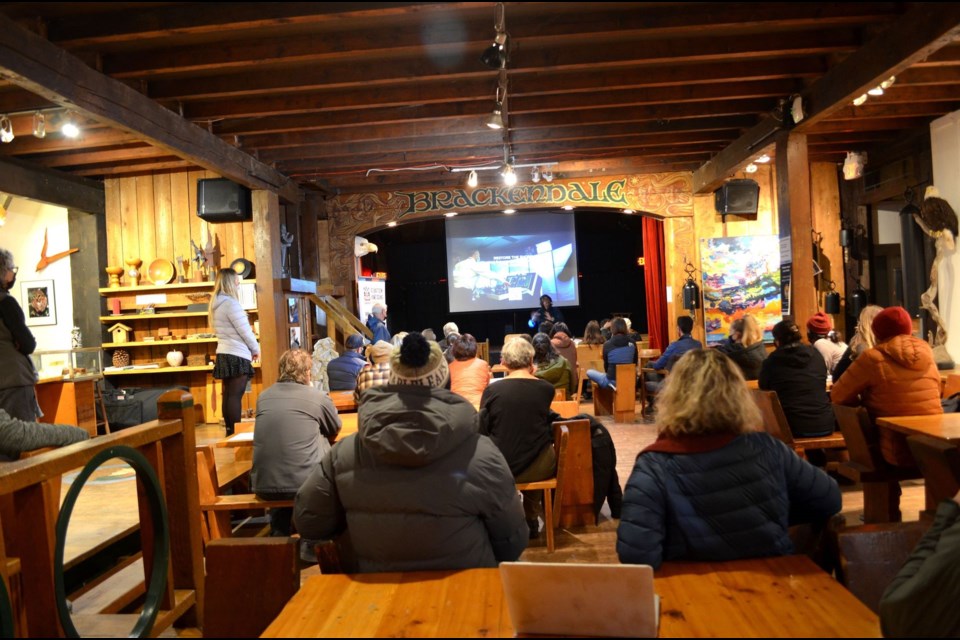Despite the proliferation of vocal critics on social media and elsewhere against the 麻豆社国产Spit's dismantling, no one voiced opposition during a recent Restore the Shore (CERP) information session on the matter.
On Nov. 17, dozens of people filled the Brackendale Art Gallery to hear about plans to remove hundreds of metres of the artificial berm south of the yellow gate. It was a presentation that, at times, was punctuated with applause.The project, formerly called the , seeks to remove a portion of the Spit so that young juvenile salmon will have access to the estuary. Since the berm was built in the 1970s to serve industry, it has led to steep declines in chinook numbers. The structure forces premature salmon out into Howe Sound before they are strong enough to survive the ocean waters.
Randall Lewis, the founder of the , framed the structure's removal as a necessary act of reconciliation with Indigenous peoples.He told the assembled crowd that back in the 1990s, when he served on Nexwsxwníw虛 ntm ta Úxwumixw (麻豆社国产Nation council), he urged the provincial government to remove the structure.
"We knew it was impacting our salmon species, chinook salmon, particularly," he said.
(The 麻豆社国产 reached out to the provincial government about this, but did not hear back by press deadline.)
The current removal project is a partnership between the 麻豆社国产River Watershed Society, 麻豆社国产Nation and Fisheries and Oceans Canada.
It is funded by the Coastal Restoration Fund, Pacific Salmon Foundation, Habitat Conservation Trust Fund, and Fish and Wildlife Compensation Program
The 麻豆社国产River Watershed's executive director, Edith Tobe, said at the meeting that the project team has been administering studies on how the removal of the berm will impact the 麻豆社国产Terminals.
There have been some concerns that removing the Spit will cause silt and sediment to deposit by the port, thus creating problems for the ships in the area.However, Tobe said that so far, studies appear to show the Spit does little to act as a shield against debris and sedimentation from the river, but it does significantly hurt the salmon's ability to cross into the estuary.
麻豆社国产River Watershed Society president Chessy Knight said that when the Spit was first constructed, there was little or no study to see its effects in the area.However, in the process of taking it out, Knight said the society has spent roughly $200,000 studying the effects of removal.
"It's so ironic to me," she said.Tobe said the project's been decades in the making.
"This project is being led, as part of reconciliation with 麻豆社国产Nation, and they've made it very loud and very clear they're not backing away," she said. "This is an important project."



